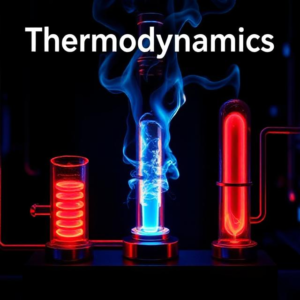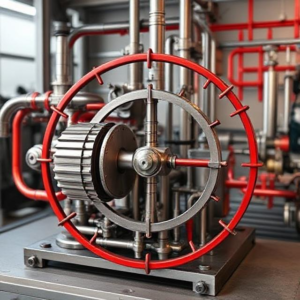Adiabatic and Isothermal Processes
In thermodynamics, there are different types of processes that describe how energy is transferred or transformed in a system, like a gas inside a piston. Two common types of processes are adiabatic and isothermal. Let’s break down both of these processes in a simple way.

1. Adiabatic Process
What is an Adiabatic Process?
An adiabatic process is one where no heat is exchanged with the surroundings. In other words, the system (like a gas) doesn’t gain or lose heat to the environment. The word “adiabatic” comes from the Greek word “adiabatos,” which means “not passing through.”
How Does It Work?
- In an adiabatic compression or expansion of a gas, the gas changes its pressure and volume, but no heat enters or leaves the system.
- Work is done on or by the gas, and the energy for that work comes from the gas’s internal energy (its temperature and pressure change).
- In an adiabatic compression, the gas is compressed, causing its temperature to rise (since no heat is added, the energy from compression increases the temperature).
- In an adiabatic expansion, the gas expands, causing its temperature to drop (because the energy is used up doing work to push against the surroundings).
Mathematical Representation:
The relationship between pressure (
) and volume (
) during an adiabatic process is given by the equation:
Where:
is the pressure of the gas.
is the volume of the gas.
is the adiabatic index or gamma, which is the ratio of specific heats (
), where
is the specific heat at constant pressure, and
is the specific heat at constant volume.
Example:
- A quick compression of air (like when you pump air into a tire) is an adiabatic process. The air gets warmer because no heat is exchanged with the environment during the rapid compression.
2. Isothermal Process
What is an Isothermal Process?
An isothermal process is one where the temperature remains constant throughout the process. “Isothermal” comes from the Greek words “iso” (meaning “equal”) and “thermal” (meaning “temperature”), so it means “equal temperature.”
How Does It Work?
- In an isothermal expansion or compression, the gas changes its pressure and volume, but its temperature stays the same.
- Heat is exchanged with the surroundings to ensure the temperature remains constant. If the gas expands and does work, heat is absorbed from the surroundings to maintain its temperature. Conversely, if the gas is compressed, heat must be released to maintain the temperature.
- Because the temperature is constant, the internal energy of the gas does not change. Instead, the work done by the gas comes from the heat exchanged with the environment.
Mathematical Representation:
For an isothermal process, the relationship between pressure (
) and volume (
) is described by Boyle’s Law:
Where:
is the pressure.
is the volume.
This means that, during an isothermal process, as the volume increases, the pressure decreases, and vice versa, in such a way that their product remains constant.
Example:
- A slowly expanding gas in a cylinder with a piston could undergo an isothermal process if the system is in thermal contact with a large reservoir (like water) that keeps the temperature constant as the gas expands.
Key Differences Between Adiabatic and Isothermal Processes
| Feature | Adiabatic Process | Isothermal Process |
|---|---|---|
| Heat Exchange | No heat is exchanged with the surroundings. | Heat is exchanged with the surroundings to keep the temperature constant. |
| Temperature Change | Temperature changes during the process. | Temperature remains constant. |
| Work Done | Work done results in a change in internal energy (temperature). | Work done does not change the internal energy, since the temperature stays the same. |
| Example | Air compressed quickly in a bicycle pump. | Gas in a piston, expanding slowly while being heated. |
Visualizing the Processes:
- Adiabatic Process:
- If you compress a gas quickly (like in an air compressor), the temperature increases because there’s no time for heat to flow in or out of the system.
- If the gas expands quickly, the temperature drops because it does work on the surroundings without receiving heat.
- Isothermal Process:
- If a gas expands very slowly and heat is added to maintain the temperature, the volume increases while the pressure decreases, but the temperature stays the same.
- Similarly, if the gas is compressed slowly, it will release heat to maintain a constant temperature.
Summary
- Adiabatic Process: No heat exchange with the surroundings. Temperature changes as the gas is compressed or expanded.
- Isothermal Process: Heat is exchanged to keep the temperature constant. Pressure and volume change, but the temperature does not.
Both processes help us understand how gases behave under different conditions, and they’re important concepts in fields like thermodynamics, engines, refrigeration, and more.











